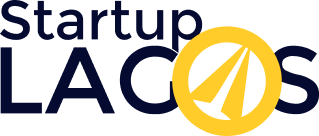"Hybrid and remote working isn't some COVID-driven or adjacent invention. The advent of COVID merely forced most employers to provide and experiment with greater levels of workforce flexibility." — Daniel Mottau
As the world continues to adapt to the hybrid work model that emerged during the pandemic, it has become clear that this approach is now a permanent fixture in the workplace. For companies to thrive in this new environment, they must address challenges related to belonging, communication, and teamwork. High-performing teams are increasingly embracing a concept known as co-elevation, where team members actively support each other's resilience in hybrid settings.
This innovative approach acknowledges that every team member shares responsibility for one another's success and well-being, especially as traditional leadership roles evolve. However, many teams still have significant strides to make in fostering this supportive culture.
Research has shown that trust and support among team members are crucial for overall performance and effectiveness. As startup founders navigate the complexities of building resilient teams in a hybrid work era, they face unique challenges and opportunities. The blend of remote and in-office work necessitates careful planning to maintain cohesion, adaptability, and productivity.
Key Approaches for Driving Resilience in Hybrid Teams
Encourage Open Communication
• Transparent Leadership: Leaders should maintain open lines of communication regarding organizational goals, challenges, and changes. Hosting virtual town halls or sharing recorded updates can keep everyone informed and engaged.
• Regular Check-ins: One-on-one meetings and team discussions are essential for leaders to understand employee concerns and needs, fostering trust and alignment.
• Asynchronous Collaboration: Utilizing tools that facilitate asynchronous communication can help mitigate meeting fatigue while ensuring that all team members stay informed.
Strengthen Team Connections
• Create a Culture of Belonging: Foster environments where employees can share personal updates or engage in casual conversations, such as virtual "water cooler" chats or fun team-building activities.
• Serve, Share, and Care: Encourage team members to support one another through empathy and shared responsibilities. For example, sharing personal highs and lows during meetings can deepen connections.
• Systematic Practices: Implement practices like "Sweet and Sour" to promote open dialogue about personal experiences, encouraging vulnerability and strengthening team bonds.
Build Trust and Accountability
• Set Clear Expectations: Clearly define roles and expectations for collaboration and accountability. Ensure that everyone understands their part in serving, sharing, and caring, while promoting open communication.
• Intentional Relationship Building: Make a conscious effort to connect employees across different locations, rather than relying on chance encounters in the office.
Promote Flexibility and Well-being
• Flexible Work Policies: Allow employees to choose their work settings based on their tasks and personal needs. This autonomy can lead to greater job satisfaction and help prevent burnout.
• Supportive Work Environment: Provide resources for mental health, skill development, and work-life balance. For instance, offering allowances for home office equipment or flexible schedules can significantly boost morale.
• Self-Care for Leaders: Leaders should practice self-care to model resilience, enabling them to better support their teams.
Cultivating a Resilient Culture
Creating a resilient culture within a startup is essential for navigating the challenges of modern work environments, particularly in hybrid settings. Here's a consolidated approach based on the strategies outlined:
• Co-Elevation: Foster a collective sense of responsibility for resilience, encouraging team members to support each other's well-being and energy levels.
• Resilience Inventory Dashboard: Regularly assess team dynamics using tools that measure energy levels, mood, and capacity. This data can help leaders identify areas needing support and make necessary adjustments.
• Focus on Innovation: Maintain flexibility in policies to adapt to unforeseen challenges. Encourage creativity and innovative thinking within the team to foster a proactive approach to problem-solving.
Enhancing Collaboration
• Diverse Collaboration Tools: Utilize platforms like Slack, Microsoft Teams, and Trello to streamline communication and workflows, ensuring all team members are aligned and informed.
• Virtual Team-Building Activities: Organize engaging virtual events such as online games, coffee breaks, or team challenges to strengthen relationships and build camaraderie among team members.
Promoting Continuous Growth
• Continuous Learning Opportunities: Encourage professional development through online courses, webinars, and workshops. This not only enhances skills but also promotes a culture of continuous improvement.
• Mental Health Support: Provide access to mental health resources and create a safe space for discussions about well-being. Consider offering employee assistance programs and wellness workshops.
Establishing Clear Objectives
• Transparent Goal Setting: Clearly define team goals and expectations to ensure alignment and focus, helping team members understand their roles in achieving collective objectives.
• Recognition and Rewards: Regularly acknowledge individual and team achievements through shout-outs, awards, or tokens of appreciation. Recognition boosts morale and reinforces a positive culture.
Empowering Team Members
• Empowerment and Autonomy: Allow team members the freedom to make decisions and take ownership of their work, fostering responsibility and enhancing commitment to team success.
• Hybrid Work Culture: Develop a hybrid work culture that respects both remote and in-office employees, ensuring equitable access to opportunities and resources for all team members.
Integrating Resilience Activities into Daily Team Meetings
Incorporating resilience activities into daily meetings can enhance team spirit and adaptability. Here are some practical ideas:
• Start with a Check-In: Begin each meeting with a quick emotional check-in, allowing everyone to share how they're feeling. This helps build emotional awareness and opens up communication.
• Quick Resilience Exercises: Dedicate 5-10 minutes for brief exercises, such as mindfulness breathing or gratitude rounds, to reduce stress and refocus the team.
• Reflect on Challenges: Discuss recent challenges the team has faced and how they tackled them, reinforcing learning and encouraging a growth mindset.
• Role-Playing Scenarios: Use role-playing to simulate unexpected work situations, helping teams develop problem-solving skills and prepare for real-life challenges.
• Celebrate Resilience Moments: Acknowledge team members who have demonstrated resilience in overcoming obstacles during the week. Celebrating these moments fosters a supportive culture.
• Set Resilience Goals: Encourage team members to establish personal resilience goals at the beginning of each week, promoting accountability and personal growth.
• End with Positive Affirmations: Conclude meetings with positive affirmations to leave everyone feeling uplifted and motivated.
Conclusion
Building resilient teams in a hybrid work environment is an ongoing journey rather than a one-time effort. By fostering open communication, strengthening relationships, supporting flexibility, and prioritizing well-being, leaders can create teams that are prepared to face today's challenges and adapt to whatever comes next.
As organizations continue to navigate the complexities of hybrid work, embracing resilience as a core principle in team-building strategies will help ensure that teams remain strong, connected, and ready to thrive in any situation.
In this transformative era, startup founders have the unique opportunity to shape the future of work by cultivating resilient team cultures. By implementing these strategies, organizations can not only overcome the current challenges of remote and hybrid work but also foster environments where innovation and collaboration can flourish.
Play audio
Comments
Add your comment
Categories
Startup Raises
255
Feature
77
Fintech
32
Fresh News
665
How To
75
Acquisition
36
Reports
18
Opinion
42
Recent Posts
Meta Rolls Out New Facebook Measures to Suppress Spam and Support Real Creators
Meta has announced a series of new measures aime...
Provisioning-on-Demand Software Can Radically Reduce Wastage for MNOs
By Craig Palmer, Chief Executive Officer at VAS-...
Logidoo Opens Global Trade Channels for African Businesses with Groupage Shipping
Logidoo, the pan-African logistics platform, has a...
Lagos Turns Up for PUBG MOBILE Community Event with 1,000+ Attendees
On March 28, 2025, Lagos transformed into the ulti...
How to Leverage Emerging Technologies for Startup Growth
In today’s rapidly evolving business landscape, em...
Related Post
The Impact of Emerging Technologies on Traditional Industries
In an age defined by rapid technological advancement, emerging technologies are...
Navigating Funding Challenges: Insights from Tech Entrepreneurs
In the dynamic landscape of the tech industry, securing funding remains a pivota...
Sustainable Technology: Startups Leading the Charge Towards a Greener Future
In an era where climate change poses one of the most significant challenges of o...








No comments